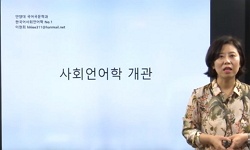In this study, we observed the abilities to recognize facial expressions between the genders, the different types of emotions (basic and complex emotions) and facial expression presenting areas (whole face and eyes). We also investigated whether there...
http://chineseinput.net/에서 pinyin(병음)방식으로 중국어를 변환할 수 있습니다.
변환된 중국어를 복사하여 사용하시면 됩니다.
- 中文 을 입력하시려면 zhongwen을 입력하시고 space를누르시면됩니다.
- 北京 을 입력하시려면 beijing을 입력하시고 space를 누르시면 됩니다.

정서차원과 얼굴제시영역이 얼굴표정 인식에 미치는 영향: 성차를 중심으로 = The Effect of emotional dimension and facial expression's presenting areas on facial expression's recognition: A comparison of gender differences
한글로보기https://www.riss.kr/link?id=A103717821
- 저자
- 발행기관
- 학술지명
- 권호사항
-
발행연도
2008
-
작성언어
Korean
-
주제어
facial expressions ; gender ; facial presenting areas ; dimensions of emotion ; 얼굴표정 ; 성별 ; 얼굴제시영역 ; 정서차원
-
등재정보
KCI등재
-
자료형태
학술저널
- 발행기관 URL
-
수록면
197-214(18쪽)
-
KCI 피인용횟수
12
- DOI식별코드
- 제공처
- 소장기관
-
0
상세조회 -
0
다운로드
부가정보
다국어 초록 (Multilingual Abstract)
In this study, we observed the abilities to recognize facial expressions between the genders, the different types of emotions (basic and complex emotions) and facial expression presenting areas (whole face and eyes). We also investigated whether there are differences in ability to recognize facial expressions according to dimensions of emotion(pleasantness/unpleasantness and awakening/relaxation dimension). A total of 32 types of emotional state facial expressions which are linked relatively strong with the emotional vocabularies were presented. In each trial, an emotional vocabulary and four facial expressions were shown to the subjects who were told to choose one suitable facial expression which was matched with the emotional vocabulary. The results showed that the subjects judged better on the condition of basic emotions more than complex emotions, the whole face more than eyes, the pleasantness dimension more than the unpleasantness dimension and the relaxation dimension more than the awakening dimension. Also, it was found that women were better at judging facial expressions than men. This study suggests that gender, types of emotion, facial presenting areas and dimension of emotion have effects on recognition of facial expressions.
참고문헌 (Reference)
1 이수정, "정서의 잠재적 차원 연구" 14 (14): 139-154, 2000
2 김영아, "정서관련 어휘 분석을 통한 내적 상태의 차원 연구" 1 (1): 145-152, 1998
3 조경자, "정서 상태와 얼굴표정간의 연결 능력의 발달" 한국감성과학회 10 (10): 127-138, 2007
4 이정헌, "얼굴표정의 제시유형과 제시영역에 따른 정서인식 효과" 10 (10): 113-126, 2007
5 한재현, "얼굴표정에 의한 내적상태 추정" 1 (1): 41-58, 1998
6 오경자, "아동 청소년의 얼굴표정을 통한 정서인식능력과 심리 사회적 적응의 관계" 한국임상심리학회 21 (21): 2002
7 김혜리, "마음이론에 대한 다학문적 연구: 진화적 관점에 기초한 발달심리, 정서심리, 정신병리 및 신경과학 연구 ; 학술진흥재단 기초학문육성 지원인문 사회분야 심화 연구 중간보고서" 2006
8 Carrol, P. M., "facial expressions signal specific emotions? Judging emotion from the face in context" 70 (70): 205-218, 1996
9 Ortony, A., "What's basic about basic emotions?" 97 (97): 315-331, 1990
10 Ekman,P, "Universals and Cultural Difference in Facial Expression of emotion ; Nebraska symposium on motivation, 1971" University of Nebraska Press 1972
1 이수정, "정서의 잠재적 차원 연구" 14 (14): 139-154, 2000
2 김영아, "정서관련 어휘 분석을 통한 내적 상태의 차원 연구" 1 (1): 145-152, 1998
3 조경자, "정서 상태와 얼굴표정간의 연결 능력의 발달" 한국감성과학회 10 (10): 127-138, 2007
4 이정헌, "얼굴표정의 제시유형과 제시영역에 따른 정서인식 효과" 10 (10): 113-126, 2007
5 한재현, "얼굴표정에 의한 내적상태 추정" 1 (1): 41-58, 1998
6 오경자, "아동 청소년의 얼굴표정을 통한 정서인식능력과 심리 사회적 적응의 관계" 한국임상심리학회 21 (21): 2002
7 김혜리, "마음이론에 대한 다학문적 연구: 진화적 관점에 기초한 발달심리, 정서심리, 정신병리 및 신경과학 연구 ; 학술진흥재단 기초학문육성 지원인문 사회분야 심화 연구 중간보고서" 2006
8 Carrol, P. M., "facial expressions signal specific emotions? Judging emotion from the face in context" 70 (70): 205-218, 1996
9 Ortony, A., "What's basic about basic emotions?" 97 (97): 315-331, 1990
10 Ekman,P, "Universals and Cultural Difference in Facial Expression of emotion ; Nebraska symposium on motivation, 1971" University of Nebraska Press 1972
11 Hanawalt,N, "The role of the upper and lower parts of the as the basis for judging facial expressions: Ⅱ. In posed expressions and candid camera" pictures" 31 : 23-36, 1994
12 Nummenmaa,T, "The language of the face (Jyvaskyla studies in education, psychology, and social research)" University of Jyvaskyla 1964
13 Darwin,C.R, "The expression of the emotions in man and animals" John Murray 1872
14 Birnbaum, D. W., "The etiology of children's stereotypes about sex differences in emotionality" 10 : 677-691, 1984
15 Scholsberg,H, "The description of facial expressions in terms of two dimensions" 44 : 229-237, 1952
16 Cacioppo, J. T., "Specific forms of facial EMG response index emotions during an interview: From Darwin to the continuous flow hypothesis of naffect-laden information processing" 54 : 592-, 1988
17 Allen, J. G., "Sex differences in emotionality: A multidimensional approach" 29 : 711-722, 1976
18 Rosenthal, R., "Sensitivity to nonverbal communication: The PONS test" John Hopkins University Press 1979
19 Baron-Cohen, S., "Reading the mind in the face: A cross cultural and developmental study" 3 (3): 39-59, 1996
20 Fraser, I. H., "Reaction time measures of feature saliency in schematic faces" 19 : 661-673, 1990
21 Hall,J.A, "Nonverbal sex differences. Communication accuracy and expressive style" Hopkins 1984
22 Green, R. S., "Multidimensional comparisons of structures of vocally and facially expressed emotions" 17 : 429-438, 1975
23 Ekman,P, "Methods for measuring facial action ; Handbook of methods in nonverbal behavior research" Cambridge University Press 1982
24 Ross, C. E., "Men who cry" 47 : 138-146, 1984
25 Baron-Cohen, S., "Is there a language of the eyes?" Evidence from normal adults and adults with autism or asperger syndrome" 4 (4): 311-331, 1997
26 Dittman,A.T, "Interpersonal messages of emotion" Springer 1972
27 Zuckerman, M., "Individuall differences in perceived encoding and decoding abilities; Skill in nonverbal communication: Individual differences" Gunn & Hain 171-203, 1979
28 Bush, L. E., "Individual differences multidimensional scaling of adjectives demoting feelings" 23 : 50-57, 1973
29 Izard,C.E, "Human emotions" Plenum Press 1977
30 Ekman,P, "Human Ethology, chapter About Brows: Emotional and conversational signals" Cambridge University Press 169-200, 1979
31 Wallbott, H. G., "How Universal and Specific is Emotional Experience? Evidence from 27 Countries on Five Continents ; Facets of emotion: Recent research" Erlbaum 1988
32 Ferguson, T. J., "Gender differences in the organization of guilt & shame" 37 : 19-44, 1997
33 Brody, L. R., "Gender & Emotion ; H&book of emotions" Guilford Press 447-460, 1993
34 Broucher, J., "Facial areas and emotional information" 25 : 21-29, 1975
35 Royal, D. C., "Empirical dimensions of emotional behavior" 15 : 419-, 1959
36 Premack, D., "Does the chimpanzee have a theory of mind?" 4 : 515-526, 1978
37 Balswick, J., "Differences in expressiveness: Gender, interpersonal orientation, and perceived parental expressiveness as contributing factors" 39 : 121-127, 1977
38 Rusell, J. A., "Cross-cultural study of a circumplex model of affect" 57 : 848-856, 1989
39 Ekman, P., "Constants across cultures in the face and emotion" 17 : 124-129, 1971
40 Averill,J.R, "A Semantic atlas of emotional concepts" 5 : 330-, 1975
동일학술지(권/호) 다른 논문
-
가정폭력 재발방지를 위한 행위자 교정집단상담이 가해자의 폭력행동, 공격성 및 자아존중감에 미치는 효과
- 한국여성심리학회
- 강은희
- 2008
- KCI등재
-
프로파일 일치도로 본 부부간 유사성과 배우자 이해가 주관적 안녕감에 미치는 영향
- 한국여성심리학회
- 김미경
- 2008
- KCI등재
-
- 한국여성심리학회
- 김영기
- 2008
- KCI등재
-
신체 놀림에 대한 지각, 신체 비교, 신체에 대한 감시, 신체에 대한 왜곡이 성형 의도에 미치는 영향
- 한국여성심리학회
- 손은정
- 2008
- KCI등재
분석정보
인용정보 인용지수 설명보기
학술지 이력
| 연월일 | 이력구분 | 이력상세 | 등재구분 |
|---|---|---|---|
| 2024 | 평가예정 | 계속평가 신청대상 (계속평가) | |
| 2022-01-01 | 평가 | 등재후보학술지 선정 (신규평가) |  |
| 2019-12-01 | 평가 | 등재후보 탈락 (계속평가) | |
| 2018-12-01 | 평가 | 등재후보로 하락 (계속평가) |  |
| 2015-01-01 | 평가 | 등재학술지 유지 (등재유지) |  |
| 2011-01-01 | 평가 | 등재학술지 유지 (등재유지) |  |
| 2009-01-01 | 평가 | 등재학술지 유지 (등재유지) |  |
| 2006-01-01 | 평가 | 등재학술지 선정 (등재후보2차) |  |
| 2005-01-01 | 평가 | 등재후보 1차 PASS (등재후보1차) |  |
| 2003-01-01 | 평가 | 등재후보학술지 선정 (신규평가) |  |
학술지 인용정보
| 기준연도 | WOS-KCI 통합IF(2년) | KCIF(2년) | KCIF(3년) |
|---|---|---|---|
| 2016 | 1.59 | 1.59 | 1.81 |
| KCIF(4년) | KCIF(5년) | 중심성지수(3년) | 즉시성지수 |
| 1.73 | 1.74 | 2.599 | 0.19 |




 KCI
KCI







